Fire engine, fire truck. The terms may seem interchangeable to you, but did you know that depending on which you say, you’re referring to two different vehicles?
It’s true!
So what exactly are the differences between a fire engine and a fire truck?
Table of Contents
Fire engines and fire trucks are different in the following ways:
- Fire engines usually get to the scene before fire trucks
- Fire engines are used for putting out fires while fire trucks are for victim rescue, roof ventilation, and controlling the fire should it grow larger
- Fire engines include equipment like hoses, pumps and water tanks (which is why they’re sometimes called pumpers)
- Fire trucks have ventilation and rescue equipment and an assortment of hydraulic aerial ladders
In this article, we’ll first explain more about fire engines and fire trucks as well as elaborate on the above differences between the two.
Although both fire engines and fire trucks can look similar to the uninitiated, by the time you’re done reading, you’ll clearly know which is which!
What Is a Fire Engine?
First, we’ll start with fire engines. These large vehicles are often red and sometimes go by the name pumpers, like we mentioned in the intro. Firefighters will ride in a fire engine, which has a myriad of equipment the firefighting crew will need to put out the fire.
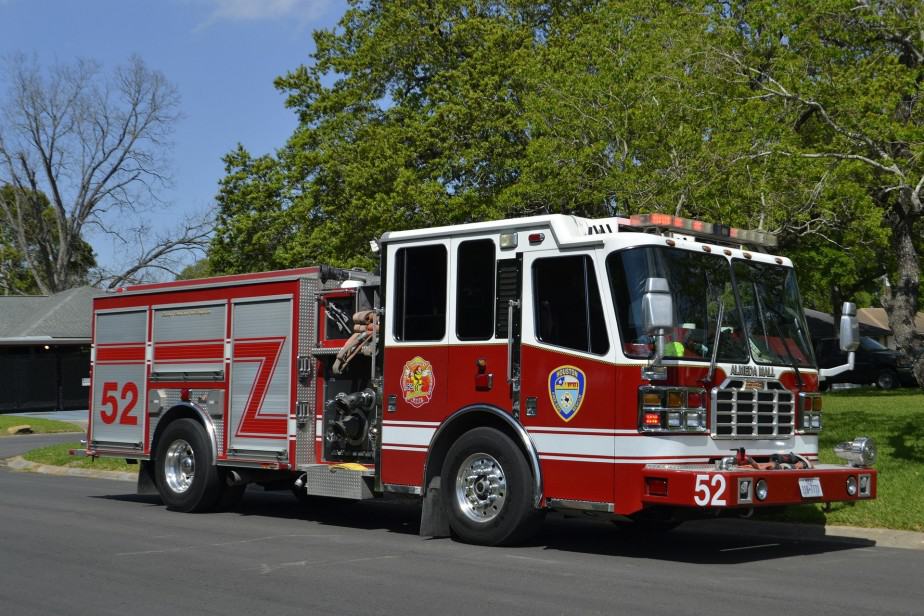
This equipment includes a lot of hose, a water tank, nozzles, and a pump. The pump has a capacity of 1,500 gallons per minute (GPM) or more.
The water tank is full with gallons and gallons of water, usually between 500 and 750 gallons in all (but can be more depending on the truck).
The firefighters will use water from the water tank to begin spraying the fire. If necessary, the engineer (also referred to as a pump operator) will also connect to an external source of water such as a fire hydrant so they don’t deplete their tanks.
As commercial vehicles, fire engines have the chassis of such, and they also include emergency lighting as well as sirens so drivers on the road know to get out of the way.
A fire engine will also come with mobile tech and two-way radios for the firefighters to communicate with others back at base or at the site of the fire so they’re aware of what they’re walking into.
What Is a Fire Truck?
What about a fire truck? Here’s where things can get confusing, because some people talk about fire engines and fire trucks as the same even though they shouldn’t.

Fire trucks do admittedly look like fire engines, but fire trucks don’t always have water pumps. A fire engine must put out a fire while the fire truck is there for a different purpose.
Since they’re not extinguishing fires all the time, they’re not smack dab in the middle of the action.
Like a fire engine, firefighters will ride in the fire truck to get to the scene. Then, if the fire engine staff needs help, the fire truck’s firefighters are ready to assist.
Mostly though, fire trucks work to extricate victims so the fire engine firefighters don’t have to be distracted from their very important job of tamping down the blaze.
Fire truck staff (aka “truckies”) may also provide ventilation that makes it easier and safer for them to enter the burning building or for victims to escape. If the truckies have to use forcible entry to get into a building, they have the tools needed for this as well.
Equipment you can expect to find on fire a truck and fire engine…
Thermal Imaging Cameras
As a type of thermographic camera, thermal imaging cameras are an incredibly useful firefighting tool that firefighters use often.
The camera transforms infrared radiation into visible light so the firefighters can detect barriers, darkness, smoke, and areas of heat. This allows the firefighter to plan how they’ll enter the building and which areas to avoid.
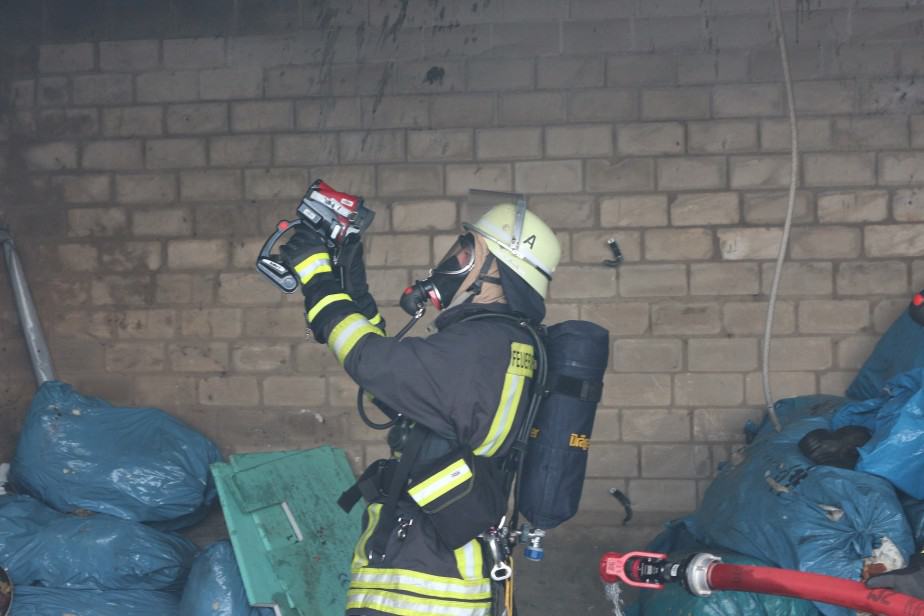
A firefighter will either wear their thermal imaging camera on their head attached to their helmet or hold it in their hand.
The housing of the camera is resistant to both water and heat, so even when the firefighter enters the building on fire, their thermal imaging camera continues to work.
The best use of a thermal imaging camera is to detect body heat, aka that which comes from a living person.
A firefighter can rely on the camera to find victims who may be unconscious or buried under rubble and cannot escape on their own. That makes the thermal imaging camera a great life-saving measure.
Self-Contained Breathing Apparatuses (SCBA)
A self-contained breathing apparatus, also nicknamed a compressed air breathing apparatus, is another vital piece of equipment used by firefighters.
There is a face piece that goes over the face of the firefighter to continuously feed them fresh air. Since the breathing apparatus is self-contained, there’s no need to attach it to a hose or another breathing gas supply other than your tank.
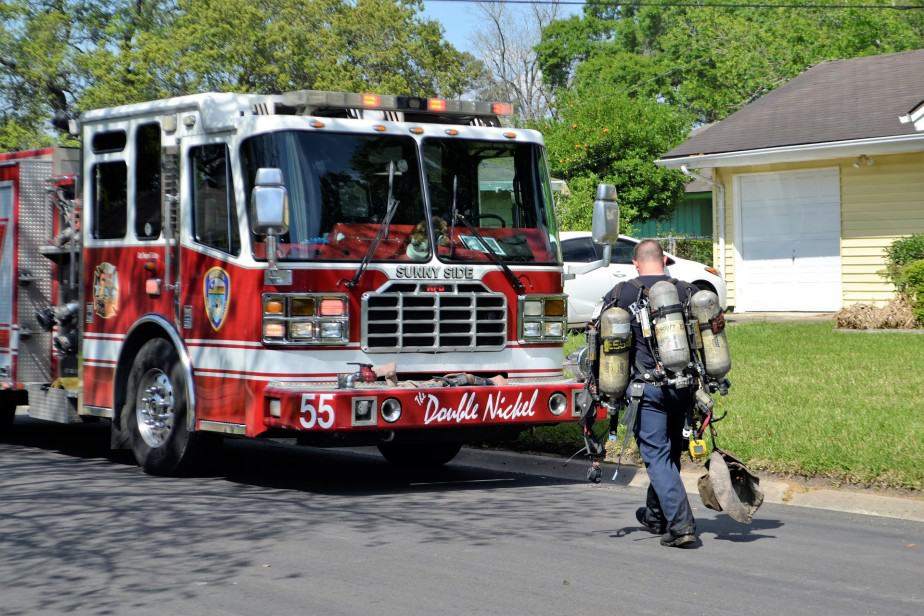
Within a self-contained breathing apparatus is an inhalation connection, a pressure regulator, and a tank that operates at high pressure.
The inhalation connection is either a face mask or a mouthpiece, while the pressure regulator does what it says, regulating pressure.
The tank produces pressure between 150 and 374 atmospheres, which is the equivalent of 2,216 and 5,500 pounds per square inch of pressure or PSI.
The self-contained breathing apparatus may be closed-circuit or open-circuit. An open-circuit breathing apparatus doesn’t use pure oxygen, but rather, compressed and filtered air.
The first regulator in an open-circuit breathing apparatus lessens air pressure as the air reaches the mask. Then, another regulator cuts the air pressure even more so it’s closer to atmospheric pressure.
Next, a continuous positive pressure valve or a demand valve receives the air, which the firefighter can breathe in and out.
Curious about the differences between the valves?
A continuous positive pressure valve keeps the air moving constantly while a demand valve only works when the firefighter inhales.
A closed-circuit self-contained breathing apparatus uses the air the firefighter inhales and exhales on a continuous loop.
That’s why this is also referred to as a re-breather. As the firefighter exhales, that air is first filtered, then augmented with fresh air if necessary.
The air circulates again where the firefighter can breathe it in, release it, and the process happens once more.
If a firefighter knows they’ll be in a building for a long period, then a closed-circuit breathing apparatus is recommended.
Extrication Tools (Jaws of Life)
Extrication tools, sometimes referred to as the Jaws of Life are a group of hydraulic-powered piston-rod tools such as rams, spreaders, and cutters.
If a person has been in a car accident or they’re stuck beneath rubble in a burning building, the Jaws of Life are a necessity.
Specialized fluids like phosphate esters are required for the Jaws of Life, as this fluid is resistant to fire. The pistons in the Jaws of Life work opposite one another, where when one lifts, the other drops.

A valve switch and piston cylinder control most Jaws of Life tools, the switch which is controllable by an operator. The operator also manages the amount of fluid, which is often roughly a quart used.
The ram sends a piston rod in and out to separate parts of a structure until the firefighter can get to the victim.
Cutters made of aluminum alloy will move in a scissor-like motion, with a mouth or blades that close and open according to hydraulics. The alloy steel used to make the piston rod in the cutters is fire-resistant as well.
If a firefighter needs to slice through rubble, car doors or parts of a building, they’ll use the cutters for the job.
Cutters may be spreaders as well in a combination tool. A spreader will have pointed blades for locking into a building or vehicle and pulling it back to reveal a victim.
Hydraulic Ladders
The last crucial piece of equipment on a fire truck, ladders let firefighters reach the heights necessary to do their job.
Since building heights differ, firefighters will carry an assortment of ladders with them on the fire truck. Some of these will be powered by hydraulics to lift and descend smoothly as well as quickly.
Besides the above, it’s also a common sight for fire extinguishers, fire hoses, and floodlights to be onboard a fire truck.
What Are the Differences Between a Fire Engine and a Fire Truck?
Now that we’ve examined fire engines and fire trucks in-depth, it’s time to take a look at the list of differences between the two vehicles that we laid out in the intro.
Fire Engines Arrive on the Scene First
Although both fire engines and fire trucks serve integral roles in saving lives and putting out fires, it’s more common for a fire engine to arrive first so they can begin working on the blaze.
Minutes afterward, if even that, the fire trucks will be on the way.
Fire Engines Put out the Fire, Fire Trucks Primarily Ventilate and Rescue
The duties of a fire engine versus a fire truck are the biggest difference. Fire engines will apply water at high pressure to the fire, extinguishing it. Sometimes a building can be saved if the blaze is controlled in enough time, and countless lives can be as well.
As we discussed earlier, since firefighters on a fire engine work so strenuously to put out a fire, that’s their main duty.
Compare that to firefighters on a fire truck, who have an assortment of duties. They may assist with rescuing victims of the fire both in and around the building.
They may also ventilate the roof or other parts of the building to limit the spread of the fire and/or to make it easier to enter the building.
Fire trucks don’t solely put out fires though.
The firefighters onboard a fire truck can do the same, although it doesn’t happen every time. If the firefighters on the fire engine are struggling with a blaze because it’s grown larger or more unpredictable, then those on the fire truck will join in until the fire is contained.
Fire Trucks and Fire Engines Have Different Equipment
Given their responsibilities, firefighters on a fire truck versus a fire engine will use two different sets of equipment.
Fire trucks include rescue tools such as the Jaws of Life as well as hydraulic ladders to reach victims on several floors of a building. These firefighters also use thermal imaging cameras for assessing safe areas of a building to enter from as well as the body heat of victims.
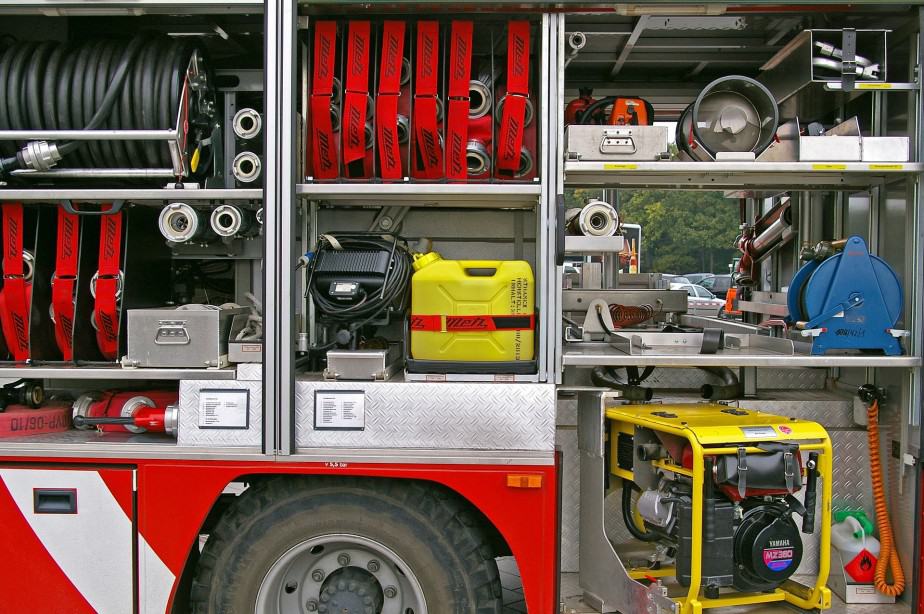
With a self-contained breathing apparatus (SCBA), they can go into a burning building and continue breathing clean air.
Firefighters who extinguish a blaze on a fire engine may use some of the same equipment if necessary, but not as frequently.
Instead, they need high-powered water pumps, plentiful water tanks with hundreds of gallons of water, and lengthy water hoses to keep the water supply coming.
When Do You Need a Fire Engine vs. a Fire Truck?
To further illustrate how fire engines and fire trucks are not the same, we thought we’d present a list of situations that call for one over another and even both. The next time you have an emergency, keep this information in mind!
If a Fire Has People in the Building, You Need a Fire Truck
Whenever victims are involved, it’s a good idea to have a fire truck on hand as well as a fire engine with firefighters putting out the blaze.
The firefighters coming in on the fire truck will use the tools we’ve discussed to get into the building, remove the rubble, and bring the victims out of the building before they perish in the fire.
If a Building Is on Fire, You Need a Fire Engine
If your building is on fire but you don’t have victims, then a fire engine alone should be suitable for the job.
The firefighters will arrive at the scene quickly, sirens blazing, and begin using their water tank or a local water supply to spray their high-pressure hoses at the fire until it’s completely out.
If Victims Are Stuck or Lost in the Building, You Need a Fire Truck
Most victims of fire will try to run out when they smell smoke or see fire, but not all can. Some victims can get stuck under rubble while others can get trapped in a room in the building.
Others might get lost and aren’t able to get out even though they know where the building’s exit is.
Fire truck staff will enter the building and use infrared cameras to find the victims and bring them out while fire engine staff will continuously work to extinguish the fire.
If a Fire Is Out of Control, You Need a Fire Truck and a Fire Engine
Fires are unpredictable, and one that seems mostly controlled can sometimes roar to new heights if the fire finds another source of ignition.
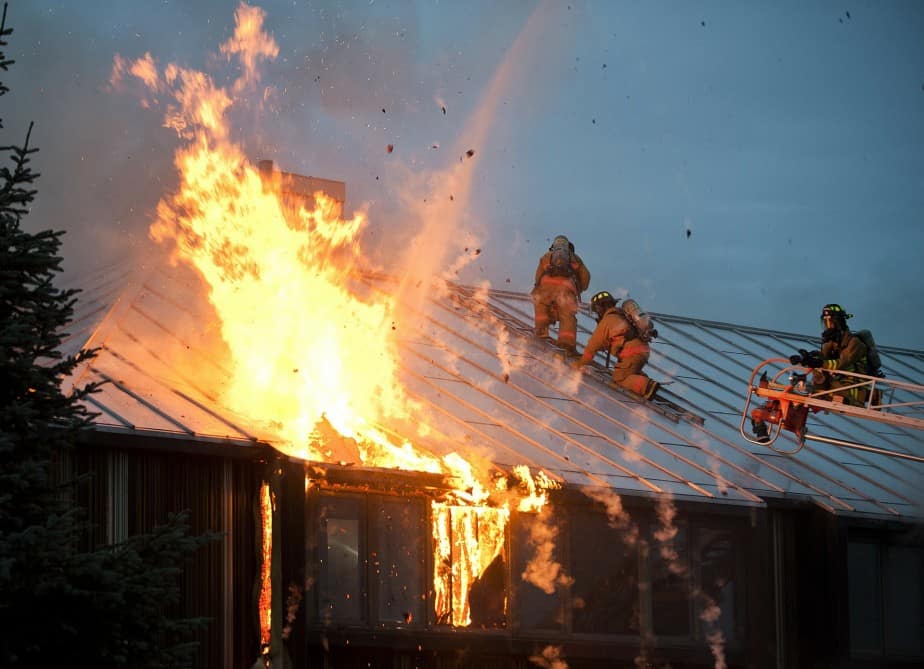
If even the firefighters that rode in on a fire engine are having a hard time managing the fire, then fire truck staff will join them to collectively put out the fire.
Conclusion
Fire engines and fire trucks may refer to similar-looking red vehicles, but their duties are quite different. Fire engines have hoses with water tanks and pumps for controlling the flames while fire trucks are mostly for search and rescue operations.
Now that you know how these trucks are different, if a fire ever occurs near you, you can appreciate the duties of a fire engine and a fire truck that much more.